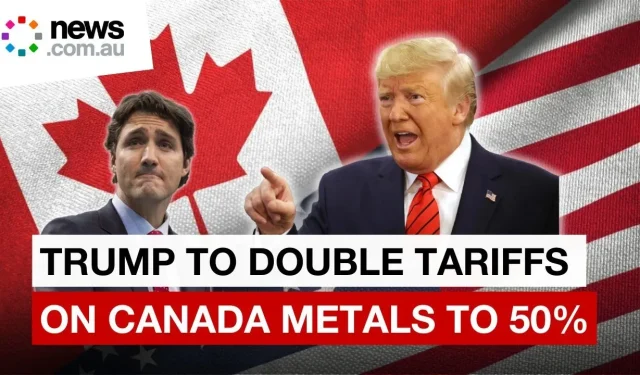The Tariff Increase Explained
In a significant economic move, U.S. President Donald Trump has announced the doubling of tariffs on all steel and aluminium products imported from Canada to an unprecedented 50%. This decision comes in direct response to a recently implemented 25% tariff by the province of Ontario on electricity exports to the United States, signaling escalating trade tensions between the two North American neighbors.
Rationale Behind the Decision
The harsh economic measures by the Trump administration are framed as a retaliation against what it perceives as unfair trade practices from Canada. By imposing a 50% tariff on steel and aluminium products, the Trump administration aims to protect American jobs and industries by making Canadian imports significantly more expensive. This escalation not only reflects the administration’s long-standing commitment to trade protectionism but also reinforces Trump’s “America First” economic agenda.
Implications for Canadian Industry
The impact of the increased tariffs is expected to reverberate throughout the Canadian economy, particularly within the steel and aluminium sectors, which are vital for manufacturing and construction industries. Business leaders in Canada have expressed concerns over potential job losses, diminished competitiveness, and increased operational costs, which could ultimately lead to higher prices for consumers. Additionally, this move might necessitate strategic adjustments within Canadian industries to mitigate the fallout from reduced exports to the U.S.
Potential Wider Economic Impact
The decision to escalate tariffs could lead to broader economic consequences beyond just Canada’s borders. Analysts warn that this trade conflict may strain international relations and disrupt supply chains integral to multiple industries. If the tariffs lead to retaliation from Canada or other trading partners, a tit-for-tat trade war could emerge, which may further destabilize global markets already affected by economic uncertainty. This situation underscores how intertwined global economies are, where one country’s trade policies can have ripple effects worldwide.
Political Ramifications
Trump’s tariff announcement is likely to be met with mixed reactions domestically. Supporters of the administration may welcome the protective measures, viewing them as a necessary means to safeguard U.S. industries. However, detractors worry about the long-term implications for trade agreements and relationships with close allies, particularly in light of ongoing discussions surrounding NAFTA and its successor agreements. As these dynamics unfold, the U.S. political landscape could see shifts in sentiments regarding trade policy as businesses and consumers feel the effects of heightened tariffs.
Conclusion
The doubling of tariffs to 50% on Canadian steel and aluminium imports marks a significant escalation in trade tensions between the U.S. and Canada, with profound implications for both economies. As the situation develops, businesses, consumers, and policymakers will need to closely monitor the emerging ramifications of these economic decisions and the broader impacts on international trade relations.


